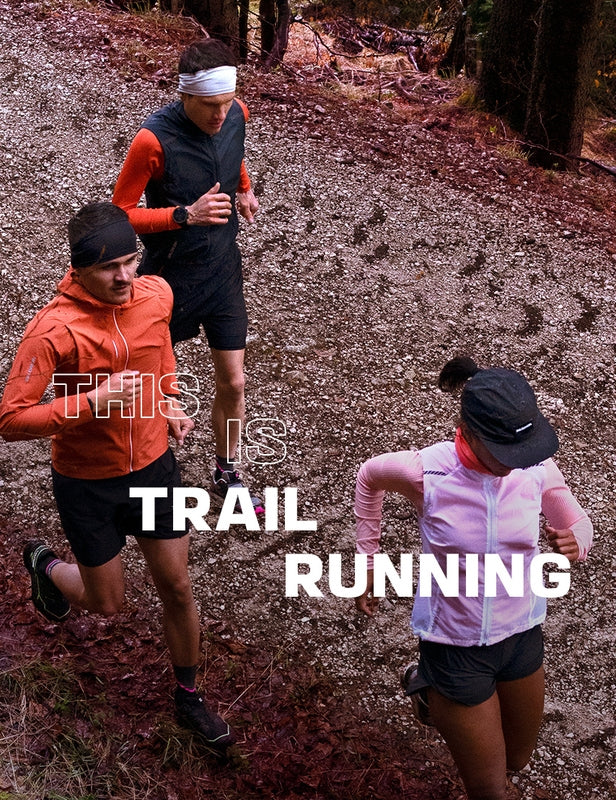HOW TO RUN WITH POLES
When trail running on steep terrain, it can be more efficient to use a technique using both your legs and your arms to help get you up and downhills. One technique you can use to make things easier for yourself is where you put your hands on your thighs and push down as you go up. Poles are also a very efficient aid when running uphill. The poles themselves are becoming lighter and lighter as they are now made from carbon fiber and other light materials. They fold down into 2 or 3 segments and are easy to carry when not in use. Once you’ve tried them, you won’t go back!
WHEN SHOULD YOU USE YOUR POLES WHEN TRAIL RUNNING ?
Trail running poles will help you save energy when running or hiking up steep uphills.
When running on hilly terrain, the extra power your arms provide can help you run faster and more efficiently.
When descending, poles can help you avoid obstacles, keep your balance and help you slow down.
On rocky terrain, try not to get your poles caught in between the rocks. If they get stuck they can snap in two, especially with poles made from carbon that may be a bit more fragile.
HOW TO USE YOUR POLES
STRAPS
In order to use your poles effectively, you need to wear the straps properly. Put your hand through the strap from bottom to top, then grip the handle. You will be able to push down hard on the straps and, at the same time your hand should be relaxed.
SYNCHRONISATION
To use your poles efficiently, good synchronisation is essential.
Here is a short exercise to start with:
- Walk normally without using your poles with your arms down by your sides
- Then, start swinging your arms naturally by your side
- Then, introduce your poles using the same natural swing
- As your leg swings through, your opposite hand and arm will come up. You should now be synchronised!
THREE TECHNIQUES TO USE YOUR POLES
You can use your poles in three different ways. The type of terrain you are running on and your speed will dictate the technique you use:
ALTERNATING
As in the exercise above, your left and right poles need to be in sync with your stride, so you need to alternate placing your left and right pole down at the same time as your steps. You should plant the pole next to your foot. The poles should be angled to the rear when they hit the ground. This allows you to push forward immediately.
This technique is particularly efficient when you want to walk fast on sustained steep terrain.
DOUBLE POLE PLANT
When you are on really steep terrain and you need maximum power, you should use the double pole plant. Both arms will come up at the same time. Drive both of your poles into the ground in front of you, lean forward, push on them for 3 steps, and repeat.
OFFSET POLE PLANT
When running, using the alternating technique isn’t very economical. Instead, you can use the offset double pole technique when on easy climbs. Plant your pole every 3 strides. This technique is a combination between alternating and the double pole plant.
This is a good technique for endurance racing or ultra racing as you can use your poles even in the fast parts of the race.
RUNNING DOWNHILL WITH POLES
Poles can also be useful for running downhill. You can use them to avoid obstacles, like rocks, without breaking your stride. They can also help you slow down, which takes the pressure off your thighs. They help you keep your balance without putting your hands down on the ground.


CARRYING YOUR POLES
When you’re not using your poles, there are several ways you can carry them. For short sections, you can run with them in your hands. If you don’t need them for an extended period of time, attaching them to your bag or belt will be more comfortable and efficient while also allowing you the use of your hands.
Most running packs now come with a way to attach a pair of poles to them. Alternatively, a pole quiver can be attached to your bag allowing you to quickly stow and access your poles. This can be really useful on hilly routes!



